Milarepa is best known today as the most accomplished disciple of Marpa who founded the Kagyu (Oral Tradition) School of Tibetan Buddhism. He is regarded as one of Tibet’s most famous yoga masters and practitioners of the esoteric teachings, as well as an ascetic monk and a spiritual poet. He was given the title “siddha” for his enlightenment achievement.
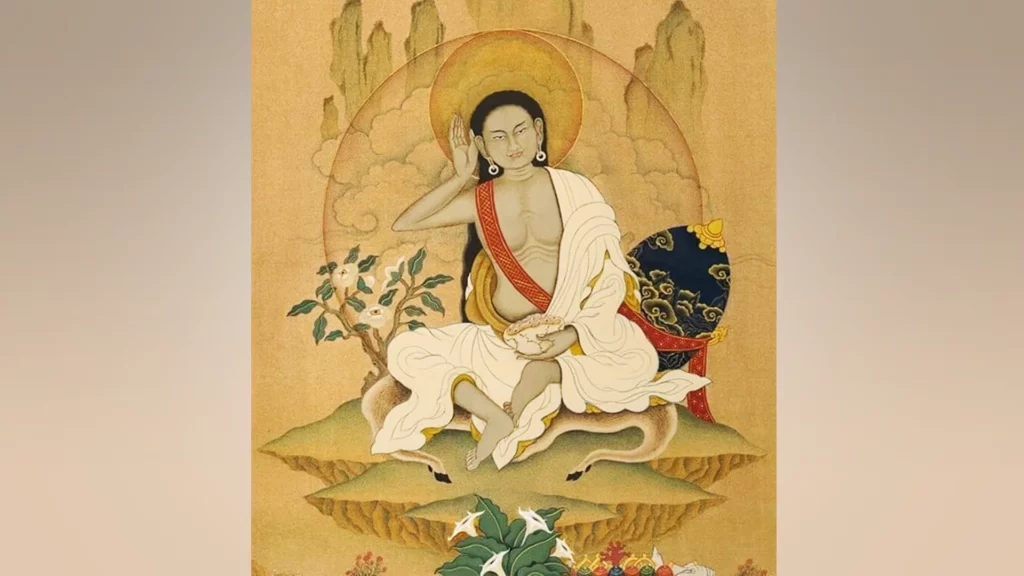
Losing His Father and Seeking Revenge
Milarepa was born in 1052 AD to a wealthy family in Western Tibet. At the age of seven, he lost his father to illness and his family wealth was taken over by his aunt and uncle. The young Milarepa and his little sister were made slaves by those who seized their family’s riches.
His mother, who vowed revenge against their relatives, sent the young Milarepa to study black magic. During a wedding dinner at his uncle’s home, Milarepa cast a spell and made the house collapse, crushing his uncle and the other 35 guests, who had taken part in causing their family’s misery. After that, he cast another spell and summoned a hailstorm and destroyed all crops in his uncle’s village. Having killed his family’s enemies, the young Milarepa experienced no joy at all but constantly felt uneasy; he felt himself carrying so much sin from all the killing he had done. At last, he vowed to learn Buddhadharma to seek liberation.
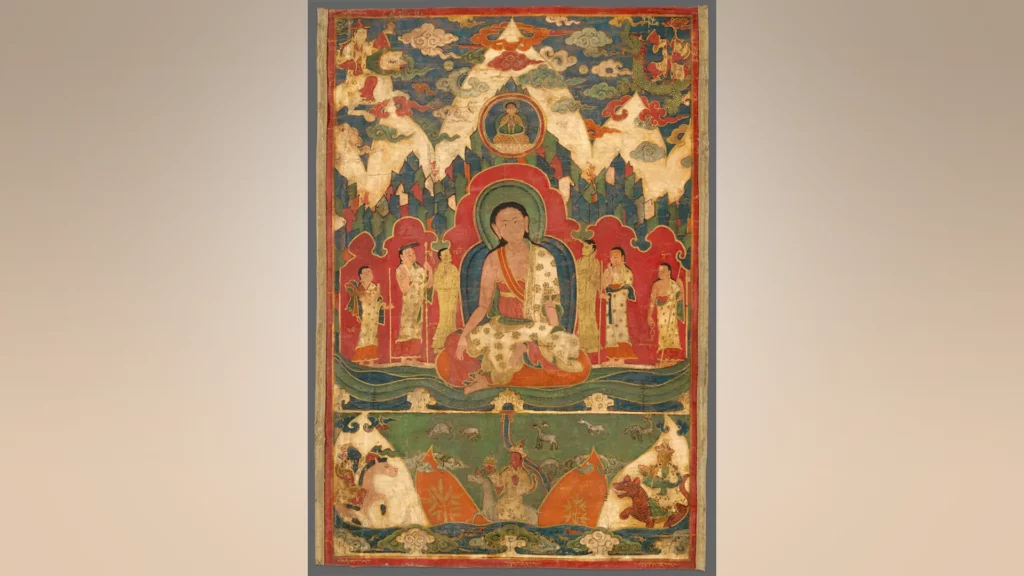
Tortured for Six Years and Seeking Liberation
Milarepa then offered himself to become Marpa’s disciple. To free Milarepa from his sins and to test his resolve, Marpa gave his disciple numerous difficult tasks to complete. Milarepa was asked by his master to carry construction materials on his own and build houses in the mountains. When the houses were almost complete, his master would order Milarepa to dismantle them and bring the construction materials back to their original spots. Having carried these materials on his back for a long period of time, Milarepa’s back was torn and scarred severely.
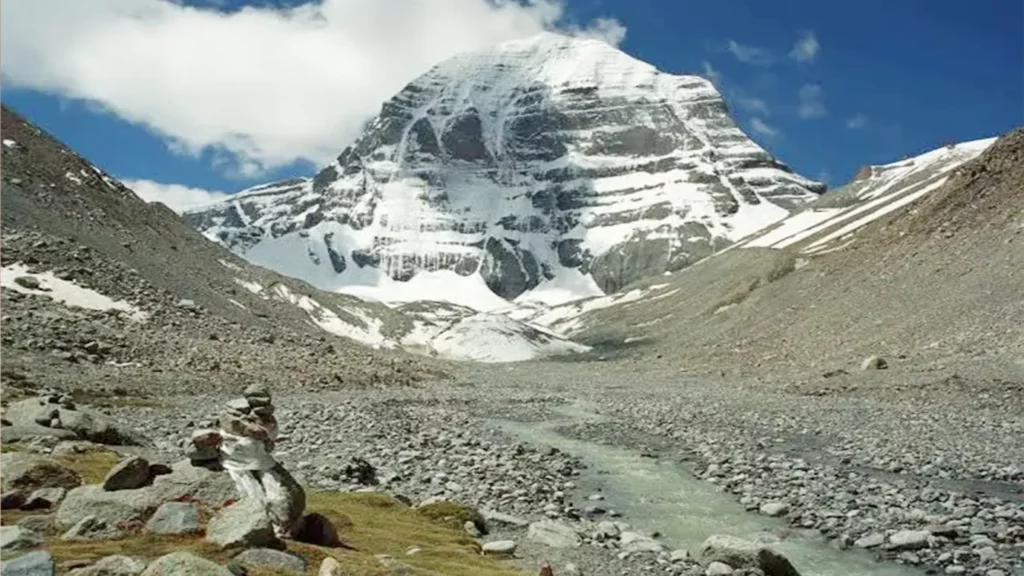
Milarepa was mentally broken by these physically demanding tasks on numerous occasions, but he was able to rise again and again. Milarepa was also beaten harshly by his master for asking his master to teach him Buddhadharma. Milarepa’s sins were cleared gradually thanks to those physical tortures. It was six years later that Milarepa finally started learning Buddhadharma from his master Marpa; he was ordered by Marpa to meditate in seclusion in a cave. Having learned how to cultivate sacred fire, Milarepa was able to withstand the harsh cold while wearing only a piece of thin clothing.
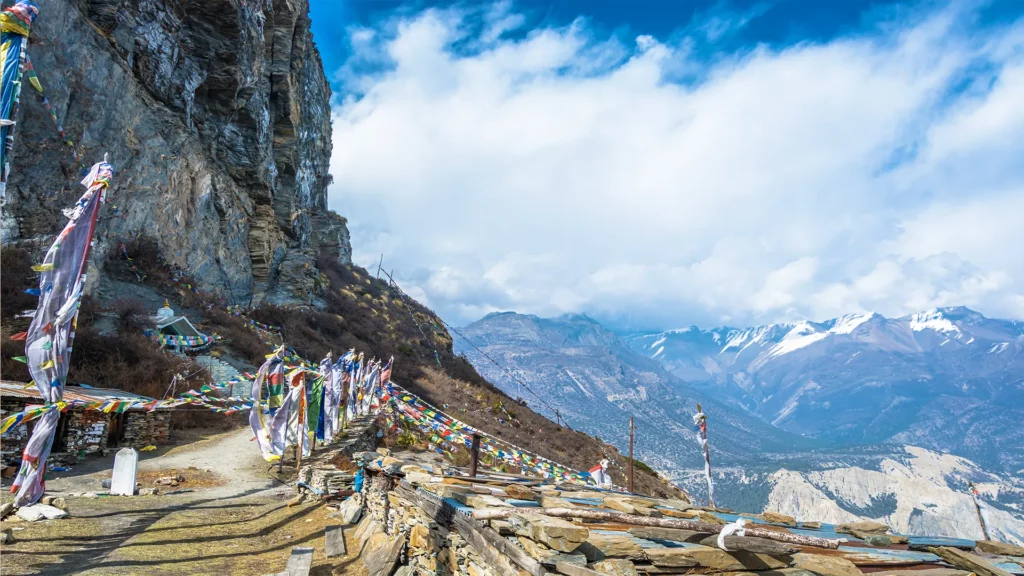
Meditating Inside a Cave and Achieving Enlightenment
When Milarepa was 45, he returned to his hometown and found that his mother had died and his sister had become a beggar. He then realized that life is full of illusions and is bound by impermanence; he also began to have a strong sense of aversion to worldly life. He decided to continue his practice in the mountains and vowed not to leave the mountains unless he achieved something.
Milarepa wore only a piece of thin, white clothing when meditating in the cave. He ate only a few foods daily. When food was not available, he would eat only green nettles to fill his stomach. Due to eating only nettles for a long period of time, he became scrawny; his body and hair turned green such that people seeing him thought they had seen a ghost. After meditating for nine years, Milarepa finally achieved enlightenment.
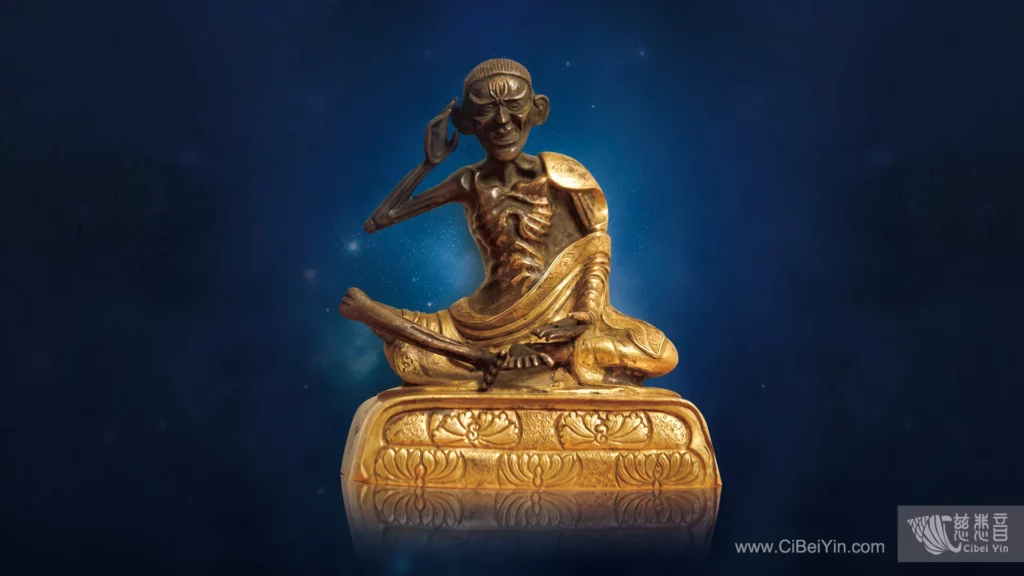
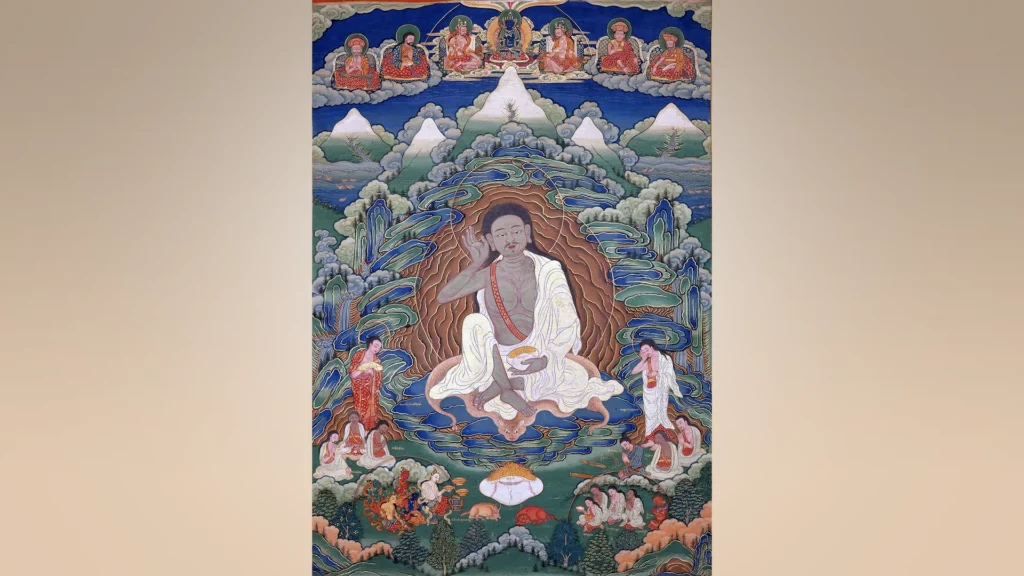
Expounding Dharma Through Songs
Milarepa left the cave and began his journey of dharma expounding after achieving enlightenment. His lessons were delivered using songs he composed; the lyrics were simple and easy to understand, yet so profound that they carried the essence of Buddhism and struck deeply in the hearts of listeners. Those songs were later compiled into an album by his disciples and spread widely in Tibet.
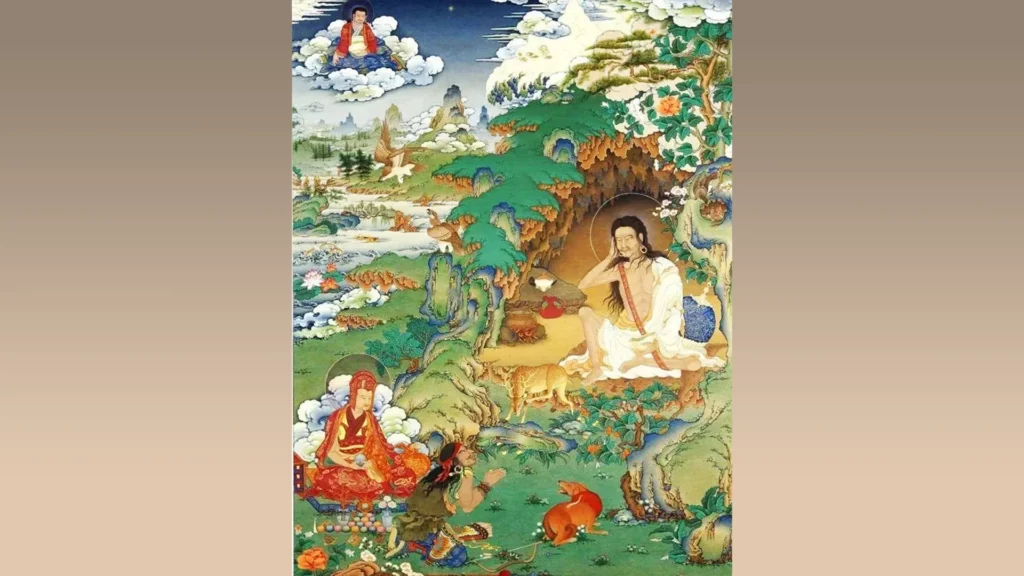
Milarepa passed away at the age of 84. Before his passing, he left a piece of cloth, a piece of candy and a knife. He told his disciples, “The cloth and candy will never run out under this knife; those who get a piece of both shall stay away from the three realms of evil.”
After the passing of Milarepa, those who were present at his cremation saw fairies collecting relics of him.
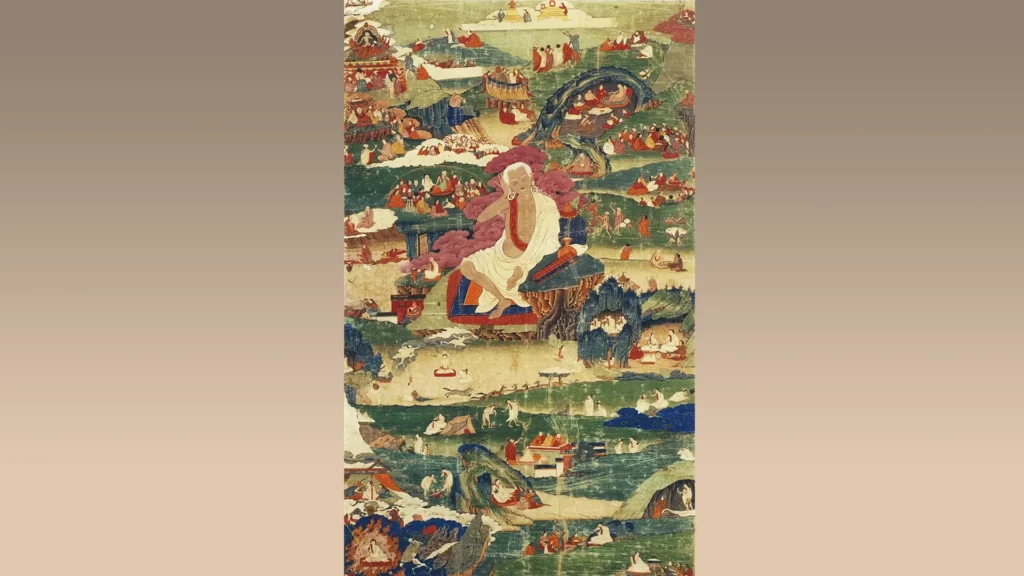
Significant and Influential
In the history of Buddhism, Milarepa’s story has great significance. He lived a difficult and rugged life, going from living a wealthy life to becoming a slave, and from avenging his family to becoming an ascetic monk. He remained faithful to Buddhadharma and his master despite the sufferings and hardships he endured. Thanks to his dedication to meditation, he freed himself from his sins, achieved enlightenment and became an expounder of Buddhadharma. His journey shows what an ordinary person can achieve with hard work and determination. The story of his life holds much educational value for those who are used to living a wasteful life and being skeptical about enlightenment achievement.
Once, he was asked by his disciple which buddha or bodhisattva’s life was he taking over from, and he answered, “I don’t know, I became enlightened from practicing a lot as a mortal.” His answer serves as encouragement to countless practitioners to keep practicing toward enlightenment.